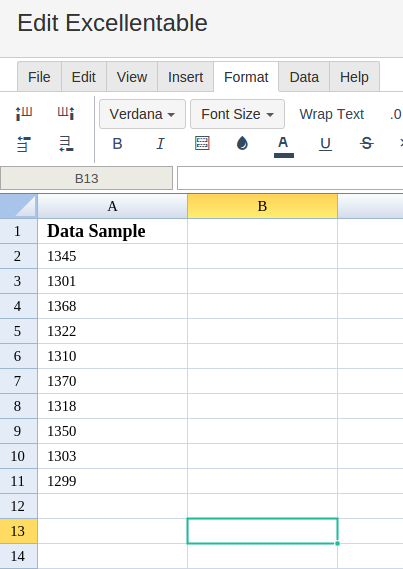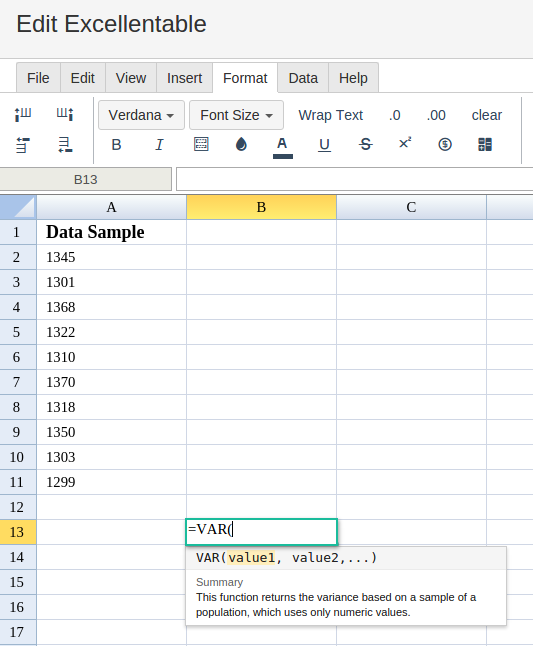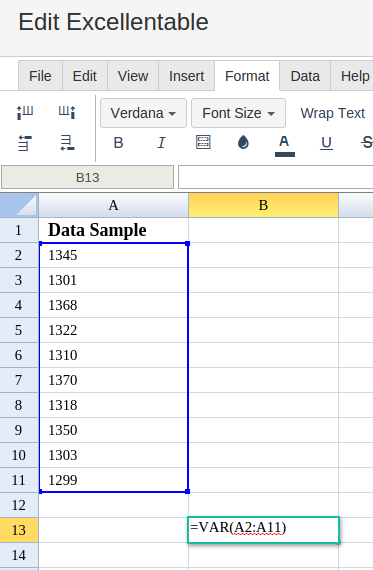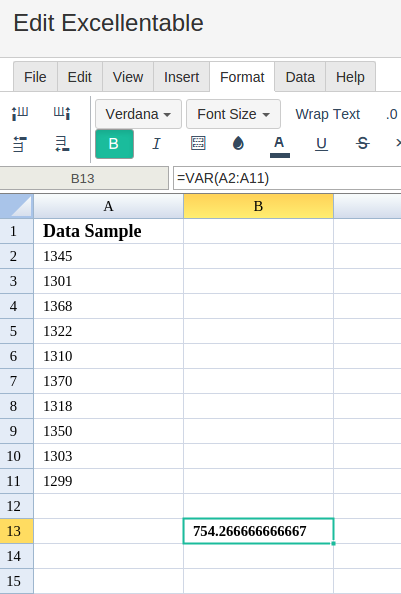VAR
Definition
Calculates the variance based on a sample.
Sample Usage
VAR(1,2,3,4,5,6,7,8,9,10)
VAR(A2:A100)
Syntax
VAR(value1, [value2, ...])
value1- The first value or range of the sample.value2, ...- Additional values or ranges to include in the sample.
Notes
Although
VARis specified as taking a maximum of 30 arguments, Excellentable supports an arbitrary number of arguments for this function.If the total number of values supplied as
valuearguments is not at least two,VARwill return the#NUM!error.VARwill return an error if any of thevaluearguments include text. To calculate variance while interpreting text values as0, useVARA.VARcalculates variance for a sample. To calculate variance across an entire population, useVARP.VARtakes the sum of the squares of each value's deviation from the mean and divides by the number of such values minus one. This differs from the calculation of variance across an entire population in that the latter divides by the size of the dataset without subtracting one.
See Also
VARPA: Calculates the variance based on an entire population, setting text to the value `0`.
VARP: Calculates the variance based on an entire population.
VARA: Calculates the variance based on a sample, setting text to the value `0`.
STDEVPA: Calculates the standard deviation based on an entire population, setting text to the value `0`.
STDEVP: Calculates the standard deviation based on an entire population.
STDEVA: Calculates the standard deviation based on a sample, setting text to the value `0`.
STDEV: Calculates the standard deviation based on a sample.
SKEW: Calculates the skewness of a dataset, which describes the symmetry of that dataset about the mean.
KURT: Calculates the kurtosis of a dataset, which describes the shape, and in particular the "peakedness" of that dataset.
DVARP: Returns the variance of an entire population selected from a database table-like array or range using a SQL-like query.
DVAR: Returns the variance of a population sample selected from a database table-like array or range using a SQL-like query.
DSTDEVP: Returns the standard deviation of an entire population selected from a database table-like array or range using a SQL-like query.
DSTDEV: Returns the standard deviation of a population sample selected from a database table-like array or range using a SQL-like query.
DEVSQ: Calculates the sum of squares of deviations based on a sample.
AVEDEV: Calculates the average of the magnitudes of deviations of data from a dataset's mean.
In order to use the VAR formula, start with your edited Excellentable:

Then type in the VAR formula in the area you would like to display the outcome:


By adding the values you would like to calculate the VAR formula for, Excellentable will generate the outcome:

A
|
B
|
|
|---|---|---|
1
|
||
2
|
||
3
|
||
4
|
||
5
|
||
6
|
||
7
|
||
8
|
||
9
|
||
10
|
||
11
|
||
12
|
||
13
|
